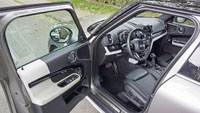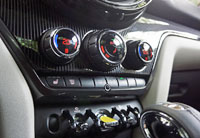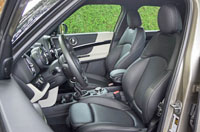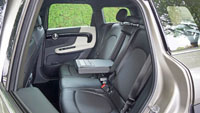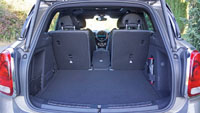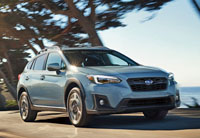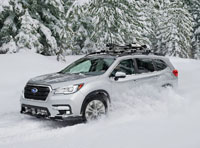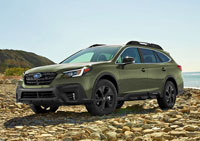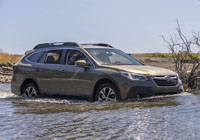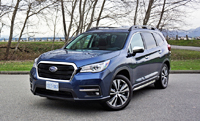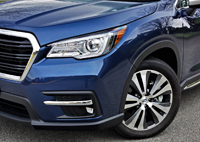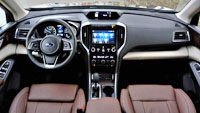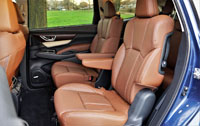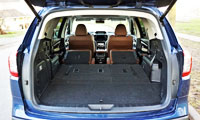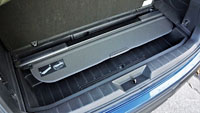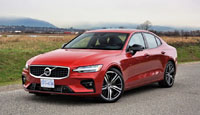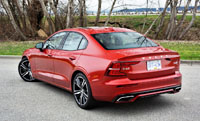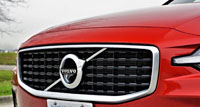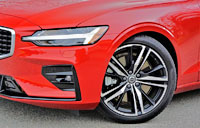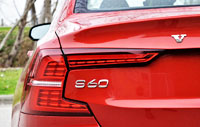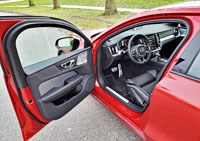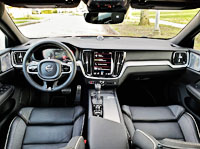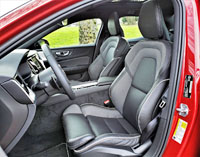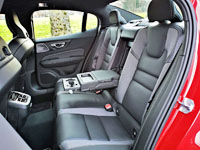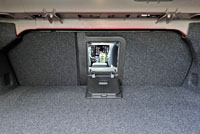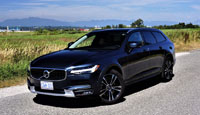
Volvo’s V90 Cross Country started life just three years ago for the 2017 model year, and it’s already being discontinued in Canada. The 2019 model year will be this large luxury crossover wagon’s final curtain call, along with the regular V90 sport wagon that’s also seen sales diminish dramatically since the smaller V60 wagon, V60 Cross Country and XC60 luxury crossover SUVs were redesigned. This leaves the impressive S90 luxury sedan as the only model from Volvo’s mid-size threesome to continue into 2020.
It might seem a bit strange to choose a big luxury sedan over a supposedly trendier crossover wagon, but such is the case with Volvo Canada. The Swedish automaker’s US division is currently selling a 2020 version of the V90 Cross Country with a refreshed 2021 waiting in the wings, but we’ll need to go Stateside to see that. As it is, Volvo hasn’t been purveying many mid-size E-segment vehicles north of the 49th, with sales of its S90, V90 and V90 Cross Country trio plunging 65 percent to just 295 units last year.

As a backgrounder, the V90 Cross Country replaced the much-loved 2000-2016 XC70, and by doing so combined Volvo’s recently reinvigorated sense of style with its well respected quality, sensible practicality, and turbocharged, supercharged four-cylinder performance to the mid-size crossover wagon category, while increasing the level of opulent luxury on offer.
Those familiar with today’s Volvo understand what I’m talking about, particularly when any of its models are upgraded to their top-tier R-Design or Inscription trim levels. This said the V90 Cross Country doesn’t get so fancy with hierarchal names here in the Canadian market, merely using one no-name trim and various packages to add options. On that note my test model featured a Premium package that includes a generous list of standard features and wealth of impressive furnishings, making for one of the more luxurious crossover wagons available.

I’m sure Audi and its many loyal enthusiasts would argue that the German brand’s entirely new 2020 A6 Allroad is even more resplendent, and despite the Ingolstadt-based contender being wholly impressive, Gothenburg’s outgoing alternative looks and feels even more upscale inside even though it’s priced $12,700 lower.
A 2019 V90 Cross Country can be had for just $62,500, whereas the A6 Allroad is comparably expensive at $75,200, and while Audi gets some prestige points for brand image, plus its potent turbocharged 3.0-litre V6 that puts out an extra 19 horsepower and 74 lb-ft of torque over Volvo’s turbocharged and supercharged 2.0-litre four-cylinder that makes 316 horsepower and 295 lb-ft of torque, this Swedish alternative is a bit easier on fuel thanks to a claimed Transport Canada rating of 11.6 L/100km city, 8.1 highway and 10.0 combined, compared to 11.8, 9.1 and 10.6 respectively.
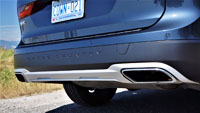
Previously Volvo sold a $59,500 V90 Cross Country T5 AWD with 250 horsepower, but it was cancelled at the end of the 2018 model year, as was the previous top-line $84,900 Ocean Race T6 AWD. The just-noted $3,900 Premium package certainly adds to this 2019 model’s luxury accoutrements, however, with features like heatable windshield washer nozzles, auto-dimming and power-folding exterior mirrors, LED interior lights, aluminum treadplates, a heatable steering wheel, front and rear parking sonar with graphical proximity indicators, Park Assist Pilot semi-autonomous self-parking, a 360 Surround View camera, a universal garage door opener, four-zone auto climate control, a cooled glove box, heated rear outboard seats, power-folding rear seatbacks and outer head restraints, a wonderfully useful semi-automatic cargo cover, an integrated mesh safety net to protect passengers from potentially flying cargo, blindspot monitoring with cross-traffic alert, etcetera.
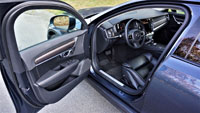
The $62,500 base price for the 2019 V90 Cross Country T6 AWD doesn’t include $900 for metallic paint, incidentally, which is a no-cost option with Audi, but the A6 Allroad only gives you the choice of black or beige leather inside, and it’s not the same high-grade Nappa leather as in the V90 CC, which is available in four zero-cost optional colours including Charcoal (black), Amber (dark beige), Maroon Brown (dark reddish brown) and Blond (light grey).
Of course, both cars can be loaded up, my tester not fully equipped. In fact it was missing a $3,600 Luxury package featuring a beautifully tailored instrument panel, an enhanced set of front seats with power-adjustable side bolsters, power-extendable lower cushions, multi-technique massage capability, and ventilation, as well as manually retractable rear window side sunshades.
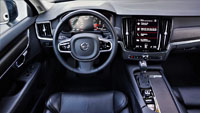
My tester didn’t include the $2,350 optional rear air suspension and Four-C Active Chassis upgrade either, and only came with 19-inch alloy wheels instead of 20-inch alloys that cost $1,000 more, while it was also missing body-colour bumpers, wheel arches and sills, Metal Mesh decor inlays (although the hardwood was very nice), a black headliner, a graphical head-up display, a Bowers & Wilkins premium audio system (with ¬gorgeous aluminum speaker grilles—a $3,750 option), and two dual-stage child booster seats integrated within the rear outboard positions, all of which might add $18,375 to the 2019 V90 Cross Country’s price, potentially hoisting it up to $80,875.

While this might seem like a lot of money for a mid-size luxury crossover wagon, consider for a moment that the 2020 Audi A6 Allroad Technik starts at $83,100 without any massage action, and while Audi’s impressive “Virtual Cockpit” digital gauge package is included (the V90 features a digital instrument cluster too, just not quite as configurable), being massaged from below a higher grade of Valcona leather will cost A6 Allroad buyers an additional $4,050, whereas including all of the V90 CC’s advanced driver assistance systems will add another $2,400.
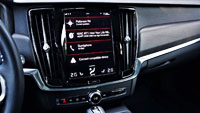
Audi buyers can also add the A6 Allroad’s $2,500 Dynamic package with Dynamic Steering and Dynamic All-Wheel Steering, another $2,500 for Night Vision Assistant, $500 more for quieter dual-pane glass, $350 extra for Audi Phonebox with wireless charging, an additional $350 for rear side airbags, and $1,000 more for full body paint (which was already priced into the top-tier V90 CC), bringing the German car’s max price up to $102,650, less $1,000 in additional incentives when signing up for a CarCostCanada membership, which provides info on all current rebates, financing and leasing deals, plus otherwise difficult to get dealer invoice pricing, so you can be fully prepared before negotiating with your local retailer (see our 2020 Audi A6 allroad Canada Prices page).
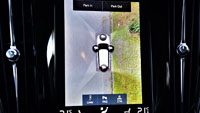
Keep in mind the additional incentives for the A6 Allroad are $1,000 less impressive than the $2,000 any Volvo dealer will chop off of the price of a 2019 V90 Cross Country (see that on our 2019 Volvo V90 Cross Country Canada Prices page), but even before factoring in such savings, this Volvo should truly impress anyone choosing between these two impressive crossover SUVs.
Both are unmistakably attractive inside and out, thanks to dynamic designs and the latest LED lighting tech. Some will like the minimalist Audi cabin more, while Volvo’s ritzier look will appeal to others. Faulting either on their quality of materials and overall construction will fall on deaf ears, as they’re both superbly crafted.
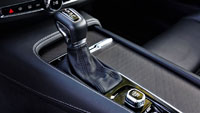
True, but Volvo makes a nicer key fob. Say what? Yes, it’s easily one of the nicest remotes in the industry, even making you feel special when outside of the car thanks to the same Nappa leather surrounding its flat surfaces as found the car’s seat upholstery, plus beautifully detailed metal around the edges. Of course, being that most owners only touch their proximity-sensing remotes when switching jackets or purses it seems a bit extravagant, but going above and beyond has always been part of what luxury owners crave.
Volvo covers the majority of surfaces with premium soft-touch synthetic or optional contrast-stitched leather, not to mention beautiful dark oak inlays on the instrument panel and doors. The more upmarket version swaps the wood out with metal inlays, as mentioned earlier, while there’s no shortage of satin-finish aluminum accents everywhere else.
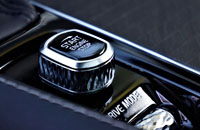
Volvo makes sure to cover most surfaces below the waste in premium pliable synthetic, which isn’t the case with a fair number of premium brands like Lexus (although they don’t sell anything in this niche segment), while each pillar is covered in the same nicely woven material as the roof liner.
While most features mentioned so far is par for the course in the luxury sector, much of the V90 CC’s buttons, knobs and switches look more like fine jewellery than anything mechanical. Volvo uses a dazzling diamond patterned bright metal to edge much of its switchgear, including the main audio knob, the rotating ignition switch, the scrolling drive mode selector, and the air vent actuators. No rival goes so far to wow its owners this side of Bentley, making the V90 CC and most everything else Volvo has on offer stand out from the rest of the luxury field.

Before continuing, I need to point out that most everything I’ve mentioned comes standard in Canada, the aforementioned digital gauge cluster included. An impressive vertical tablet-like infotainment touchscreen takes up the majority of the centre stack, with super clear, high-definition graphics and deep, rich colours, plus an interface that’s as easy to use as a smartphone or tablet thanks to familiar tap, swipe and pinch capabilities (not always the norm in the luxury class). It comes filled with all the expected functions too, including one of the coolest HVAC temperature controllers in the industry, and a superb 360-degree overhead camera system. The touchscreen in my V90 CC tester, which comes near to being a top-line model, is almost exactly the same as the one in the smallest and most affordable Volvo XC40 crossover SUV, or any other new Volvo, which allows easy adaptation to those moving up through the range.
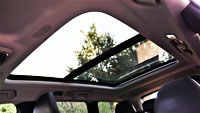
The digital instrument cluster offers up a bright, clear display too, albeit with a slight matte finish to diminish glare. While it’s configurable, Volvo doesn’t go so far to wow its driver as Audi does with its previously noted Virtual Cockpit, being that you’re not able to make the multi-infotainment display in the centre system larger and the circular gauges smaller. Where Audi amazes is the Virtual Cockpit’s ability to dramatically reduce the size of the primary dials and maximize the multi-info display to the point it takes over most of the screen, which is great for viewing the navigation’s map while driving. The V90’s gauge package provides good functionality in different ways, mind you, with the primary instruments reducing in size slightly while some multi-info display features get used, and the centre area is fairly large and appealing thanks to attractive graphics and most functions from the infotainment system.
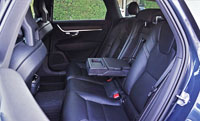
While the V90 CC provides state-of-the-art electronic interfaces and surrounds its generous supply of features with a sumptuous interior, it wouldn’t matter one bit if Volvo didn’t supply the worthy powertrain noted earlier, and matching handling dynamics. The big wagon’s 315 horsepower and 279 pound-feet of torque are more than enough for energetic V6-like acceleration from standstill and ample get-up-and-go during passing manoeuvres. The engine combines with a quick-shifting eight-speed automatic transmission with manual mode, but alas there aren’t paddles for wandering fingers. Those wanting to do their own shifting can do so via the gear lever, but other than for testing I never bothered, as it’s a superb transmission when left to its own devices.
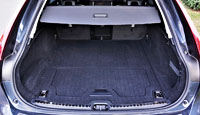
The comfort-focused V90 Cross Country isn’t quite as quick through the corners as the more road-hugging V90 T6 AWD R-Design sport wagon I tested previously, but it’s not far off. The CC gets a 58-millimetre (2.3-inch) suspension lift, meaning that its centre of gravity is affected, so its lateral grip isn’t quite as tenacious as the sportier wagon. This said, unless really trying to make time through a winding mountainside back road you probably won’t notice, and besides, the Cross Country is more about comfort than speed anyway. To that end it’s suspension, together with its aforementioned front seats, is glorious, and ideal for charting the cottage road less travelled or trekking through deep snow.
Making the latter possible, all V90 Cross Country crossover wagons come standard with all-wheel drive, albeit no off-road mode so don’t go wild when venturing into the wilderness. Still, it handles slippery situations well, making me confident that light-duty off-road conditions would be no problem.

Volvo provides a set of aluminum roof rails as standard equipment, while you can get roof rack cross-members, bike racks, storage toppers and more from your dealer’s parts department, all coming together to make the V90 Cross Country a perfect companion for outdoor activities such as cycling, kayaking, and camping trips. A $1,345 trailer hitch package with electronic monitoring and Trailer Stability Assist (TSA) is also available, perfect for towing a small boat or camp trailer.
Along with the comfortable ride and superb seats mentioned earlier, the V90 CC’s driving position is wonderfully adjustable and therefore ideal for most body types. I’m slightly shorter than average at five-foot-eight, with legs that are longer than my torso, which sometimes causes a challenge if the telescopic steering column doesn’t reach far enough rearward. The V90 CC had no such problems, resulting in a comfortable setup that left me fully in control.
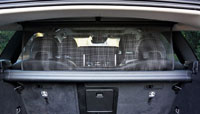
When sitting behind the driver’s seat set to my height, I still had 10 inches ahead of my knees, plus about five inches from my shoulder to the door panel, another four beside my hips, and three and a half or so over my head. Stretching my legs out, with my shoes below the driver’s seat, was easy, while rear seat comfort was enhanced with my test car’s four-zone automatic climate control that included a handy interface on the backside of the front console. A set of heatable outboard seats would be popular with rear passengers for winter ski trips without doubt, as would the big standard panoramic sunroof anytime of the year. Adding to the sense of openness, the V90 CC also gets rear HVAC vents on the backside of the front centre console, plus another set more on the midpoint of each B-pillar. A really fancy centre armrest folds down between outboard passengers, featuring pop-out dual cupholders, a shallow tray, plus a lidded and lined stowage bin, while LED reading lights hover overhead.

A power tailgate provides access to the V90 CC’s spacious cargo compartment, at which point the previously noted retractable cargo cover automatically moves up and out of the way. The cargo area measures 560 litres (19.8 cubic feet) aft of the rear seatbacks and about 1,530 litres (54 cu ft) with the rear row dropped down, and is beautifully finished with high-quality carpets right up each sidewalls and on the rear seatbacks, plus the floor of course, while underneath a rubber all-weather cargo mat (which comes as part of a $355 Protection package also including floor trays for four of the five seating positions, a centre tunnel cover, and the just-mentioned cargo tray), my test model’s floor included a pop-up cargo divider with integrated grocery bag hooks. The cargo floor can be lifted one more time, providing access to a shallow carpeted compartment for stowing very thin items (it was ideal for storing the carpeted floor mats while the all-season ones were being used).

I really appreciated the V90’s centre pass-through, which made the otherwise 60/40 split-folding rear seatbacks more versatile, but this said it’s a bit small and narrow, and not as useful as a true 40/20/40-split rear seatback. Still, two pairs of skis could fit within, but you’d still need to stow two down the 40-percent portion of the cargo area if four wanted to go skiing, forcing one passenger onto the hump in the middle. When dropping those seats, however, powered release buttons on the cargo sidewall make the job ultra-easy. These flip the headrests forward automatically as well, which can also be lowered from the front to improve rear visibility.

So who’s right for the V90 Cross Country? I think it’s perfect for those considering the move up from a traditional four-door sedan or wagon into something more practical, yet not ready for a big, SUV-style crossover like Volvo’s XC90. This said I’m not going to recommend the V90 CC over Audi’s new A6 Allroad or vice versa, at least not yet, mostly because I haven’t driven the new German. Still, having spent some time inside the Ingolstadt alternative, I can easily say this Volvo measures up, while Audi will have to work very hard to achieve more comfort than this V90 CC, and any advantage in fuel economy is a good thing (although some would rather have more power).
At the end of the day it comes down to one’s personal taste, not to mention the ability of your local Volvo retailer to source a new V90 Cross Country. If you like what you see don’t wait any longer as they’re disappearing quickly.
Story and photo credits: Trevor Hofmann
Photo Editing: Karen Tuggay




